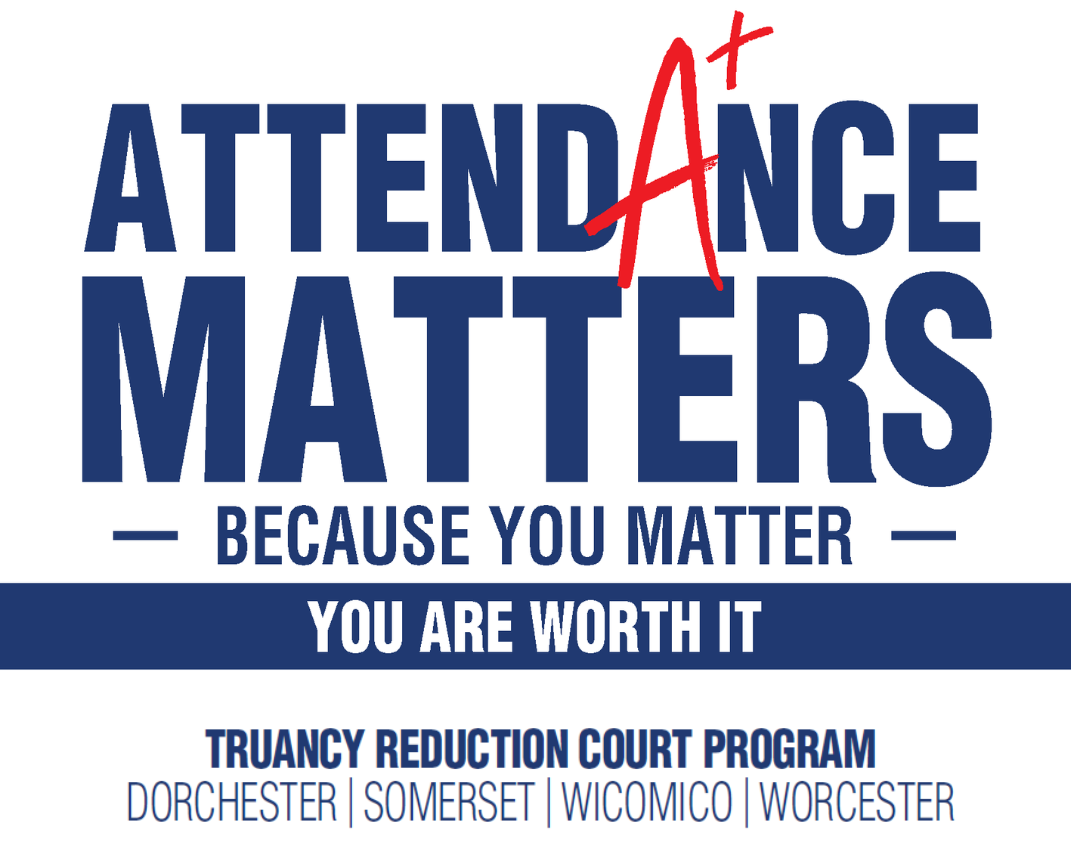Serving youth and families of Maryland's First Judicial Circuit

First Judicial Circuit
Kendall Timmons,
Regional Program Manager
Dorchester County
Shannon John, Case Manager
Somerset County
Alison Bergeron, Lead Case Manager
Wicomico County
Vacant, Case Manager
Worcester County
Vacant
The purpose of the Truancy Reduction Court Program (TRCP) is to improve school attendance and positively affect the youth and their family’s attitudes about education through a nurturing approach. Every effort is made to ultimately build a relationship between the family, the school, and the court. Participation in the court’s program brings families the added benefit and services of a court‐appointed case manager to determine the reasons for poor attendance, navigate school requirements, facilitate communication, and make referrals for community‐based services when appropriate.
Serving more than 200 youth and their families each fiscal year, the TRCP is providing full-service truancy case management and utilizing a proactive approach designed to address the causes of truancy and improve the student’s attendance, attachment, and achievement in the school environment. TRCP serves as a proactive intervention rather than a punitive reaction.
Program History
Truancy reduction court was first implemented in the state in Maryland’s First Judicial Circuit during the 2001 school year. This problem-solving court was created to battle the oppressive volume of youth who were truant during that particular year. It has been widely noted that truant behavior is commonly linked to other forms of delinquency, thus leading to negative contact with law enforcement and subsequent incarceration.
In 2004, the General Assembly created the Truancy Reduction Pilot Program (HB1443) to serve the needs of students and families within Maryland’s First Judicial Circuit. Codified at §3‐8C‐01 through §3‐8C‐10, the program, now simply known as the Truancy Reduction Court Program (TRCP), began in Wicomico County in December 2004. It continued to develop throughout the lower eastern shore with the additions of Somerset County (November 2005), Worcester County (January 2007), and Dorchester County (March 2007).
Program Process
Attendance Matters
for Success in School and Life
- Set a regular bedtime and morning routine for your child.
- Lay out clothes, make lunches and pack backpacks the night before.
- Discuss the importance of school and attendance with your child.
- Follow the school's attendance policy for absence, late arrival, and early departure.
- Use email to submit absence notes directly to your child’s school.
- Avoid appointments and extended trips when school is in session.
- Choose a school club or activity for your child to participate in for fun.
- Meet with your child's teacher or school counselor regularly.
- Download the school communication app to view attendance records regularly.
TRCP is a four-phase, six to nine-month program to engage with and help rehabilitate youth and families that have tolerated, fostered, or recently developed truant behavior by the youth.
Referrals to the Program are initiated upon the receipt of a truancy petition, filed by the local public school system in the county circuit court. The Program is not designed to supplant the initial administrative interventions taken by the local school system. The expectation of the court is that the local school system will continually make all available efforts to address unlawful absenteeism and barriers to attendance prior to the first appearance in court.
Families who have received a truancy petition from the court are encouraged to contact the truancy court case manager assigned to their county of residence.
The first appearance in court shall be for an adjudicatory hearing to determine if the youth is truant. The presiding magistrate shall inform the youth and their family of the purpose of the Program, the expectations of the Court, and deliver an age‐appropriate litany.
Most often immediately after a finding of truancy, the disposition hearing begins to uncover the reasons for truant behavior and determine the appropriateness of the youth and family for Program participation. Additionally, the Public School Liaison will share academic, conduct, and attendance history/challenges to allow the presiding magistrate a more holistic perspective of needs and relevant services.
Upon recommendation of the parties and Program staff, the presiding magistrate may order assessments and services as deemed necessary and the youth/family will formally enter the Program. All entries into the Program (even cases involving previous participants/graduates of the Program) begin at Phase One.
School Attendance in Maryland
Maryland law requires regular school attendance unless a student is excused with a lawful absence. This applies to youth who reside in the state and are five years and older up to the age of 18. Once a child has reached the age of 18, he or she is no longer required by law to be enrolled in school. Md. Code Ann., Educ., §7-301
A truant youth is one who is unlawfully absent from school for more than 8 days in any quarter, 15 days in any semester, or 20 days in a school year.
Md. Code Ann., Educ., §7-302.2
An absence, including absence for any portion of the day, for any reason other than those cited as lawful (below) is presumed to be unlawful and may constitute truancy.
Md. Code Regs. 13A.08.01.04
Students presently enrolled in public schools are considered lawfully absent from school, including absence for any portion of the day, only under the following conditions:
- Death in the immediate family. The local school system shall determine what relationships constitute the immediate family.
- Illness of the student. The principal or a pupil personnel worker shall require a physician's certificate from the parent or guardians of a student reported continuously absent for illness.
- Pregnancy and parenting-related conditions as determined by the local school system, including absences due to:
- Labor, delivery, recovery, and prenatal and postnatal medical appointments;
- Illness or a medical appointment of the student's child; and
- A legal appointment involving the pregnant or parenting student related to family law proceedings, including adoption, custody, and visitation.
- Court summons.
- Hazardous weather conditions. Hazardous weather conditions shall be interpreted to mean weather conditions which would endanger the health or safety of the student when in transit to and from school.
- Work approved or sponsored by the school, the local school system, or the State Department of Education, accepted by the local superintendent of schools or the school principal, or their designees as reason for excusing the students.
- Observance of a religious holiday.
- State emergency.
- Suspension.
- Lack of authorized transportation. This does not include students denied authorized transportation for disciplinary reasons.
- Other emergency or set of circumstances which, in the judgment of the superintendent or designee, constitutes a good and sufficient cause for absence from school.
Md. Code Regs. 13A.08.01.03

